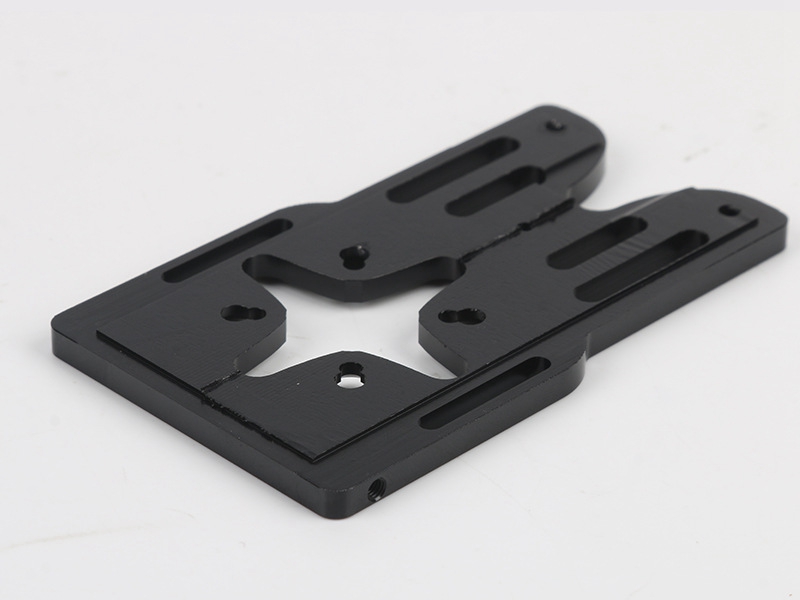What are the primary advantages of Selective Laser Sintering (SLS) over other 3D printing methods?
Selective Laser Sintering (SLS) is an advanced and highly efficient 3D printing technique renowned for creating durable, complex, and high-precision parts. Unlike other additive manufacturing methods, SLS offers distinct advantages, particularly regarding material versatility, design flexibility, and production scalability. Below, we will explore these benefits and how Neway Machining leverages this technology to meet the needs of industries such as aerospace, automotive, medical devices, and more.
1. Superior Material Versatility and Mechanical Properties
Unlike methods such as Fused Deposition Modeling (FDM) or Stereolithography (SLA), which are often limited in material choices, SLS supports a wide array of materials, including plastics, metals, ceramics, and composites. This makes SLS a versatile solution for industries requiring functional parts with specific material properties. The materials used in SLS, such as high-strength polymers and metal alloys, offer excellent mechanical properties, including high tensile strength, resistance to high temperatures, and durability, which are critical for end-use parts in aerospace, medical, and automotive applications.
At Neway Machining, we integrate various advanced materials, such as superalloys and ceramics, into our 3D printing services. This ensures that customers receive parts that meet the rigorous demands of high-performance industries.
2. Unmatched Design Freedom and Complex Geometry Capabilities
SLS stands out from other 3D printing methods due to its ability to produce intricate and complex geometries that are difficult or impossible to achieve with traditional manufacturing techniques like CNC machining. With SLS, parts can feature internal channels, intricate lattice structures, or overhangs that require no additional support, as the powder bed itself provides the necessary support during the build process. This design flexibility is particularly beneficial for producing lightweight yet strong components for aerospace, robotics, and automotive industries.
Neway Machining’s Rapid Prototyping Service takes full advantage of SLS’s design capabilities, allowing clients to quickly iterate and optimize part designs before moving to mass production. This approach accelerates the product development cycle and ensures the production of geometrically complex components that meet functional specifications.
3. High Precision and Consistency in Production
One of the key benefits of SLS is its ability to produce parts with exceptional precision and repeatability. By using a laser to sinter fine powder layer by layer, SLS offers a high degree of accuracy, with a typical resolution in the range of 0.1mm to 0.3mm. This precision makes SLS ideal for producing parts with tight tolerances and smooth surface finishes, which are essential for industries like medical devices and high-performance engineering applications.
At Neway Machining, we complement SLS technology with our precision machining services to ensure that every part produced, whether through 3D printing or CNC machining, meets the exacting standards required for critical applications.
4. Scalable Production and Reduced Lead Times
SLS is highly scalable, enabling both rapid prototyping and low-to-medium-volume production runs. Unlike traditional manufacturing methods, SLS does not require the creation of expensive molds or tooling, reducing setup costs and lead times. This makes SLS particularly well-suited for industries that require short production runs, frequent design iterations, or custom components. The ability to produce functional prototypes and end-use parts directly from CAD files also streamlines the production process, reducing overall time-to-market.
Neway Machining’s Low Volume Manufacturing Service integrates the benefits of SLS with our full suite of CNC machining services, allowing us to support clients through every stage of the production process, from prototyping to low-volume manufacturing, while maintaining cost-efficiency and quality.
5. Cost-Effectiveness for Complex and Customized Parts
Although some 3D printing methods may offer lower costs for basic parts, SLS is cost-effective for complex designs where traditional manufacturing would require expensive tooling or multi-step processes. The ability to print parts with intricate geometries, internal structures, and minimal post-processing significantly reduces material waste, tooling costs, and time spent on assembly. This makes SLS an ideal solution for producing customized parts or limited-run batches, especially for applications where functional performance is paramount.
Neway Machining’s 3D Printing Services enable cost-effective production of complex and customized parts, catering to the needs of industries that demand both design complexity and performance. Whether for a unique prototype or a low-volume production run, SLS provides an efficient and flexible solution.
Conclusion
Selective Laser Sintering (SLS) offers several compelling advantages over traditional 3D printing methods, including superior material versatility, the ability to create complex geometries, high precision, scalability, and cost-effectiveness for producing intricate parts. These benefits make SLS an invaluable technology for the aerospace, automotive, medical devices, and robotics industries. Neway Machining’s expertise in CNC machining and prototyping services ensures that our clients can leverage SLS technology to produce high-quality, functional components tailored to their specific needs, with the added assurance of expert engineering and manufacturing support.



